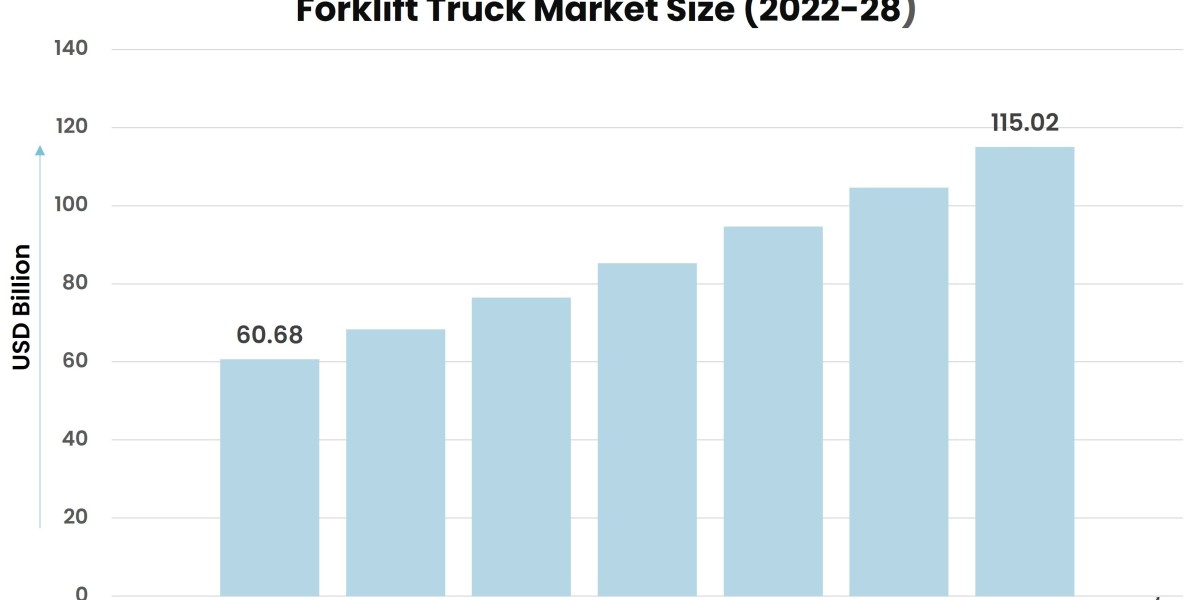The forklift truck market is experiencing significant transformation as new technologies and shifting industry demands reshape its landscape. From warehouses to manufacturing plants, forklift trucks remain essential tools for handling materials, improving efficiency, and enhancing productivity. As industries continue to evolve, so do the trends that influence the forklift truck market. This article highlights key trends that are shaping the future of the forklift truck industry across various sectors.
According to Stratview Research, the forklift truck market was estimated at USD 60.68 billion in 2022 and is likely to grow at a CAGR of 10.99% during 2023-2028 to reach USD 115.02 billion in 2028.
1. Rise of E-commerce and Warehouse Automation
The growth of e-commerce has been one of the most significant drivers of demand for forklift trucks. The surge in online shopping has created a need for more efficient material handling in warehouses, where goods are stored, sorted, and shipped. As a result, the market is seeing increased investment in warehouse automation, with forklift trucks playing a central role. Automated guided vehicles (AGVs) and autonomous mobile robots (AMRs) are beginning to complement traditional forklifts, enhancing warehouse efficiency by reducing labor costs and speeding up operations. Additionally, forklifts are being equipped with advanced sensors, cameras, and software to improve safety and precision in fast-paced environments.
2. Electric Forklifts Leading the Charge
Sustainability is becoming a top priority for many industries, and the forklift truck market is no exception. Electric forklifts are gaining popularity due to their lower emissions, reduced noise, and lower operating costs compared to internal combustion (IC) engine models. As companies aim to reduce their carbon footprints, the shift toward electric forklifts is accelerating. Advancements in battery technology, particularly lithium-ion batteries, are enhancing the performance and lifespan of electric forklifts, making them suitable for longer shifts and more demanding applications in both warehouses and manufacturing facilities.
3. Focus on Safety and Ergonomics
Safety is a critical concern in any environment where forklift trucks are used. Manufacturers are responding by incorporating advanced safety features, such as automatic braking systems, proximity sensors, and cameras that provide 360-degree views around the vehicle. Additionally, ergonomic designs are being prioritized to ensure that operators remain comfortable and productive throughout their shifts. Adjustable seats, improved cabin layouts, and user-friendly controls are contributing to fewer injuries and better overall efficiency.
4. Customization and Versatility in Manufacturing
Manufacturing plants have diverse needs, from moving raw materials to transporting finished goods. As a result, there is growing demand for customized forklift solutions tailored to specific tasks. Forklift manufacturers are offering a wide range of models that can be adapted for different environments and industries. From high-capacity forklifts used in heavy industries to compact models designed for tight spaces, customization is becoming a key trend in the market. Forklifts equipped with attachments like clamps, rotators, and side shifters are providing versatility to meet the unique needs of different manufacturing processes.
Conclusion
From the rapid growth of e-commerce to the push for sustainability, the forklift truck market is being shaped by various trends across both warehouse and manufacturing sectors. Electric forklifts, automation, safety features, and customization are all key factors influencing the future of the market. As technology continues to advance and industries evolve, forklift trucks will remain vital to ensuring efficient and safe material handling across diverse environments.









